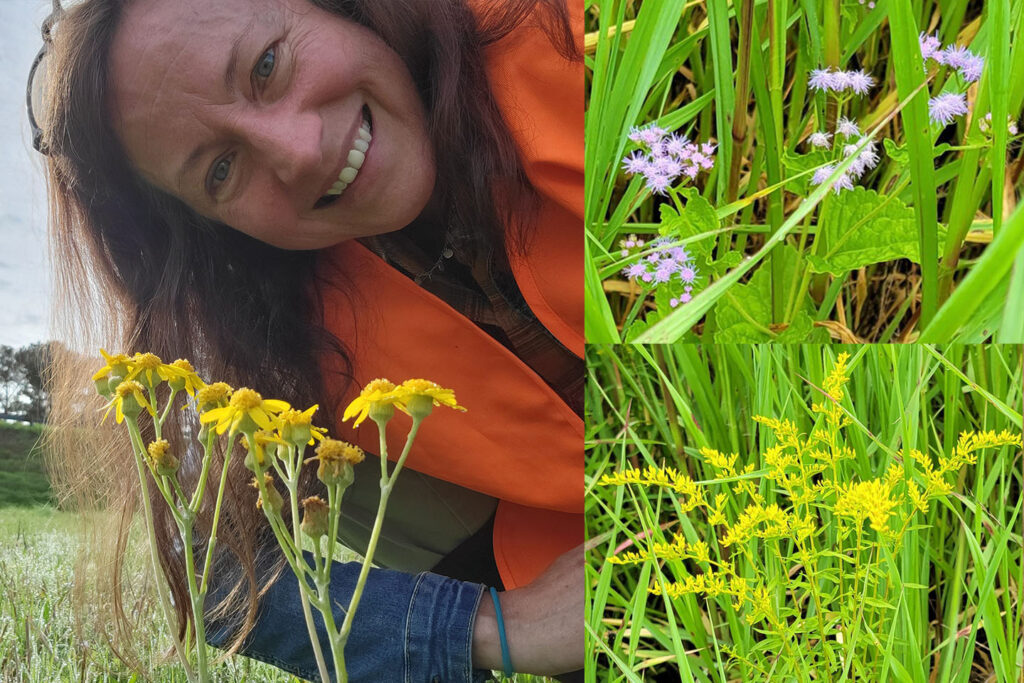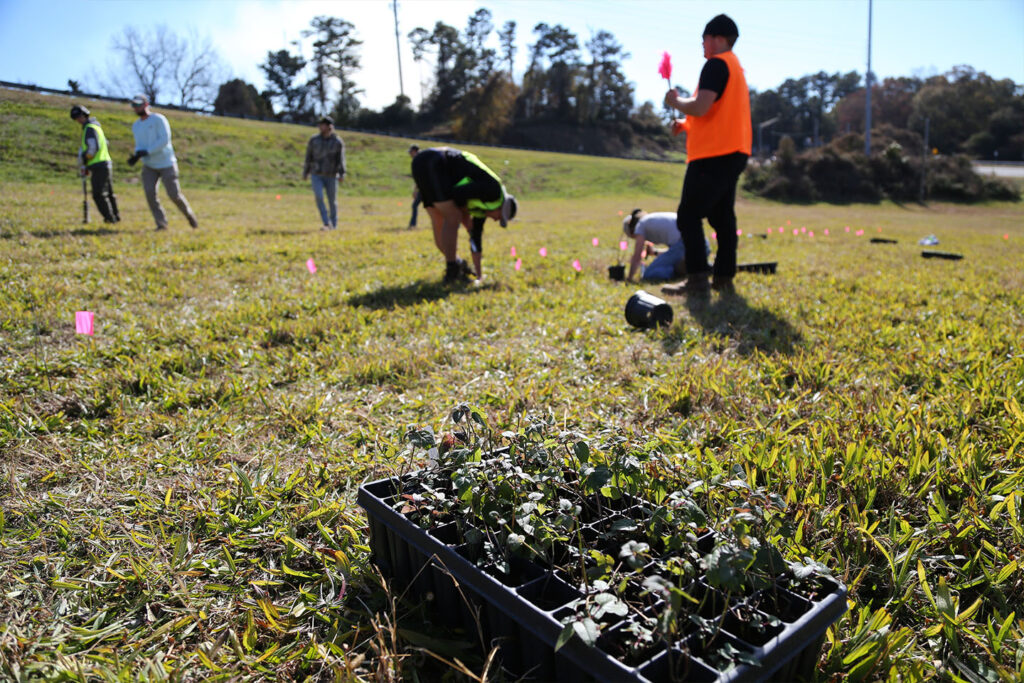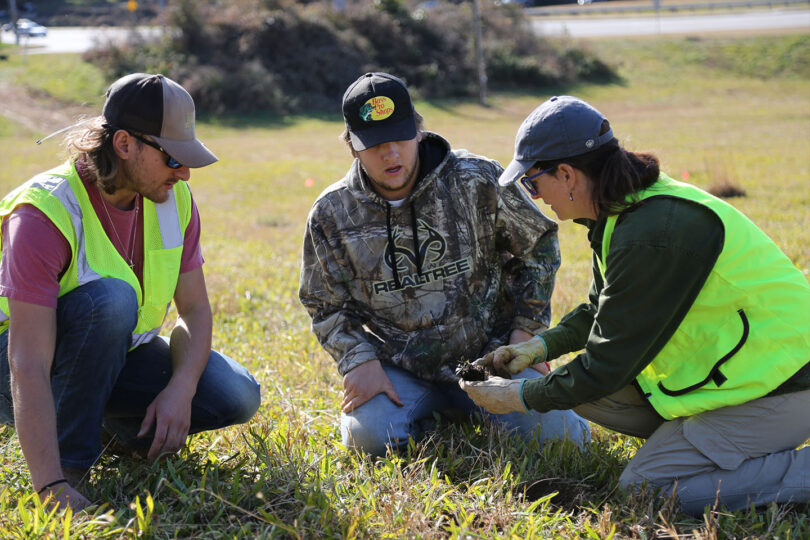Native plants installed by the State Botanical Garden of Georgia at the University of Georgia near the GA-10 Loop in Athens are changing the area from being covered in kudzu back to a more natural state.
The project, funded by Keep Athens-Clarke County Beautiful, was planted in November 2021. Volunteers from the State Botanical Garden, Keep Athens-Clarke County Beautiful, the Georgia Department of Transportation and students from the UGA College of Environment and Design all pitched in to plant the area along the entrance ramp next to the GA-10 Loop at Milledge Avenue.

State Botanical Garden Conservation Coordinator Jennifer Ceska visits native plants growing at the Loop 10 site. (Submitted photo)
Zach Wood, the grasslands coordinator at the State Botanical Garden, said all the plants chosen for the project are native to Georgia. He said they selected hardy species of plants they felt pretty confident would survive.
In total, 22 native plant species are planted at the site, including butterflyweed, Asclepias tuberosa; purple coneflower, Echinacea purpurea; black-eyed Susan, Rudbeckia fulgida; and Carolina lupine, Thermopsis villosa.
“Native plants function to support their ecosystem, and that’s important because our roadsides are turning into monocultures of non-native species that don’t support our native wildlife,” Wood said.
He added that non-native species don’t filter water as well as native species, which is significant on roadsides to handle stormwater runoff.
When they’ve checked on the plants, all the species planted were established and growing. Wood said there was concern the plants would succumb to drought, but the value of native plants is their ability to survive in stressful conditions.
The team doesn’t water the area at all.
“It would go against the spirit of doing it,” Wood said. “We’re trying to figure out the least effort to put native plants back into a place that’s been kind of beat up.”
The botanical garden initially applied for a grant to do the project but did not receive it. Stacee Farrell, executive director of Keep Athens-Clarke County Beautiful, wanted to see the project happen and took it to the Keep Athens-Clarke County Beautiful Board of Directors, which decided to help fund the project.

Volunteers from the State Botanical Garden, Keep Athens-Clarke County Beautiful, the Georgia Department of Transportation and students from the UGA College of Environment and Design all pitched in to plant the area along the entrance ramp next to the GA-10 Loop at Milledge Avenue. (Photo: Shannah Montgomery)
“We’re really excited to support the project and to help plant native and drought-tolerant species,” Farrell said. “We love the folks at the botanical garden and want to help implement their work and research. It’d be great to continue to replicate this project not just here but around the state.”
Up until 2011, the site was covered in kudzu. Wood said there are still a lot of non-native invasive species at the site, such as crabgrass, foxtail grass and Johnson grass.
The GDOT District 1 Office in Gainesville has supported the project by providing a right-of-way location on Loop 10, helping install the plants, creating signage and helping ensure that the planted site is not mowed until appropriate times.
“This project is so important because it’s so visible,” Wood said. “It’s going to demonstrate an alternative way of managing roadsides.”
Richard Littleton, state agronomist manager at GDOT, handles anything having to do with roadside vegetation, flower plantings and mowing for the northern half of the state. He helped install the native plants on Loop 10 and ensured that signage went up so the native plantings aren’t mowed while in growing season.
“We’re always looking for ways to make things sustainable,” Littleton said. “The more we can do that’s natural, it helps everything. It’s the right thing to do to be a good steward of our lands.”
For more information about the State Botanical Garden of Georgia, visit botgarden.uga.edu.








